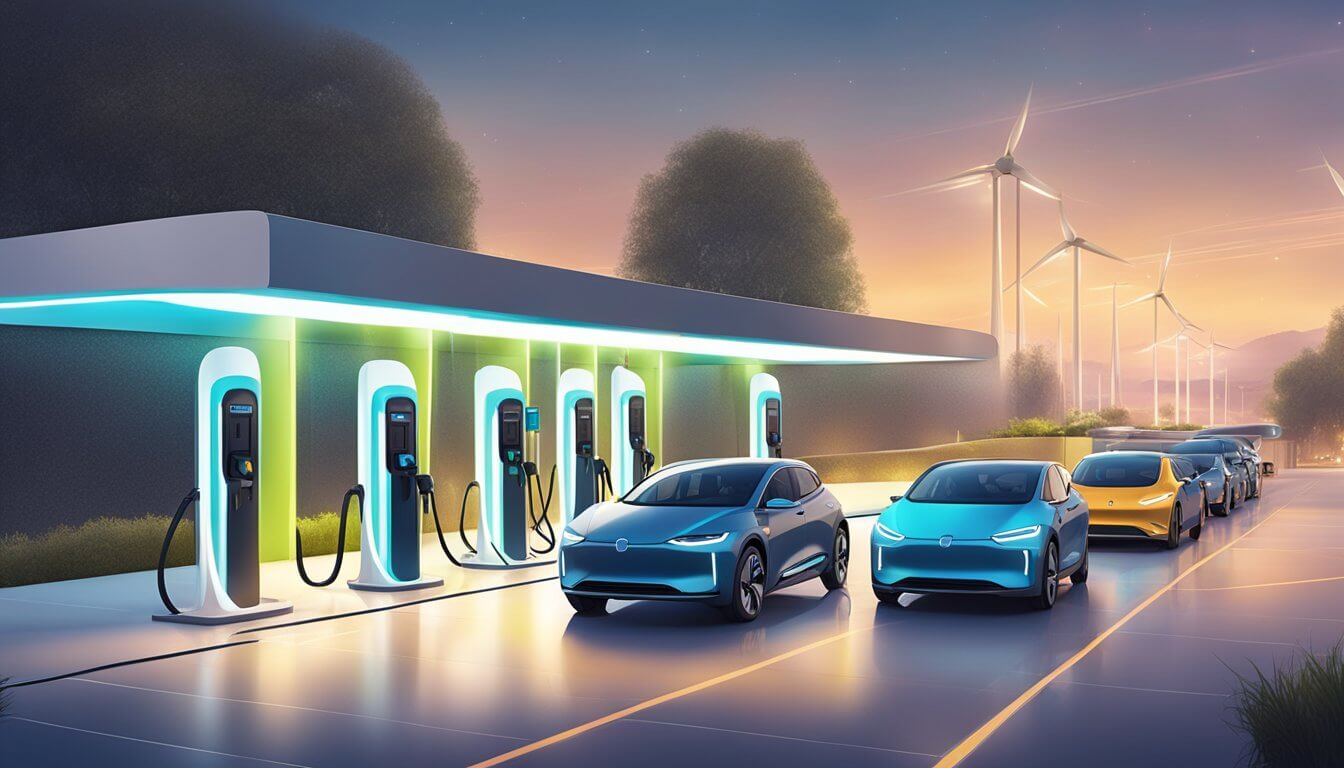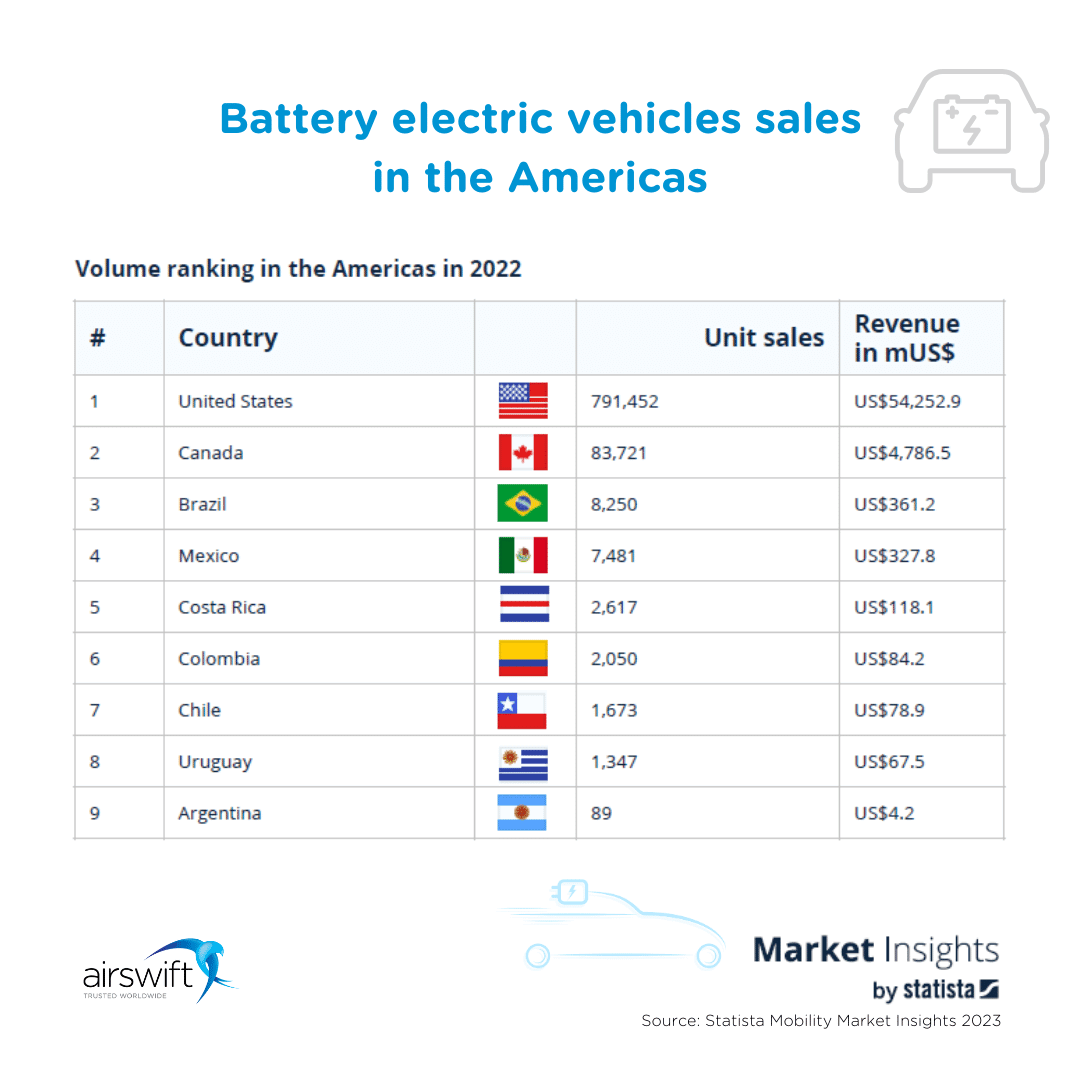
By
Raphael Santos
January 11, 2024
Updated
January 23, 2025
The rise of EVs and their impact on the automotive industry
The increasing popularity of electric vehicles (EVs) is transforming the automotive industry, as consumers and governments become more aware of the environmental benefits of electric mobility. As EVs become more accessible and affordable, significant efforts are being directed towards building efficient and comprehensive EV charging infrastructure.
In 2024, these advancements in the automotive industry have created an electric-driven ecosystem with fewer barriers.

Additionally, various government policies and regulations are being implemented globally to promote the deployment of charging infrastructure, ensuring that sustainability goals are met in a timely manner.
However, challenges still exist in meeting the rapidly growing demand for public charging stations and ensuring the continuous development of energy-efficient technologies compatible with the fast-evolving EV market.
A brief on the electric vehicles market landscape
But which countries are leading the way in this green vehicle revolution? A video by CNBC explores the global EV race and the factors that influence the adoption and production of EVs in different regions.
The video compares the performance of China, Europe and the US in market share, policy support, infrastructure development and innovation. It also highlights the challenges and opportunities that each region faces in the transition to a low-carbon mobility future. Watch it now!
EV adoption trends
The electric vehicle (EV) market has grown significantly in recent years, driven by increasing environmental concerns and supportive government policies. In the United Kingdom, for example, the government has announced a ban on the sale of new petrol and diesel cars and vans from 2035, pushing for a more widespread adoption of zero-emission vehicles.
This demonstrates the country's strategy to compete in the market race against Germany, which is currently leading in electric vehicle unit sales in Europe in 2022, as shown by the charts below.
Global EV market: China, Germany, United States
Globally speaking, EV sales have been steadily increasing, with countries like China, Germany, and the United States taking the lead in expanding their EV markets. Various factors, such as higher fuel efficiency, lower operating costs, and technological advancements in battery technology, have contributed to the growth of the global EV market.
- China: Leading the global EV market, China has been significantly investing in electric vehicle technologies and charging infrastructure to meet its goals for reducing greenhouse gas emissions and improving air quality. The country has quickly become a hub for EV innovation, with several homegrown EV manufacturers gaining prominence worldwide.

- Germany: With a strong automotive industry, Germany has been rapidly adopting electric vehicles. The government has provided generous incentives to encourage EV adoption by consumers and businesses alike. Furthermore, several German car manufacturers are investing heavily in electric vehicle research, production, and market development.

- United States: The United States has a diverse EV market, driven by automakers like Tesla, leading the charge in electric vehicle innovation. Federal and state-level incentives, such as tax credits and rebates, have also supported the growth of the EV market. In addition, significant investments are being made in charging infrastructure to facilitate the widespread adoption of electric vehicles.

China, Germany, and the United States are powerhouses in revolutionising the transportation industry. These countries are paving the path towards a groundbreaking future in transportation. However, other top markets like the UK are not going to sit idly by and let this happen without taking action. The winner of this will be the world, as it will witness an increasing momentum in its EV ecosystem and a reduction of fossil fuels.
And how about the growth of charging infrastructures?
We cannot discuss the EV market without addressing one of its significant challenges: the need to expand charging infrastructures.
Electric vehicles (EVs) growth has led to an increasing demand for efficient and accessible charging infrastructure. Public charging networks are essential to support EV users' journeys outside their homes. These networks typically consist of various types of charging stations, such as slow, fast, and rapid chargers, that cater to different charging requirements.
Taking the UK again as an example, the country's government and local authorities are working with charging device manufacturers and charge point operators to establish a robust public charging network. This collaboration aims to remove barriers to EV adoption and ensure EV drivers have access to reliable charging facilities regardless of location.
Home and workplace charging solutions
A majority of EV charging takes place at home or the workplace. As a result, an essential element of charging infrastructure development is providing suitable home and workplace charging solutions. Home charging usually involves the installation of a dedicated EV charge point, which is often subsidised by the Office for Zero Emission Vehicles (OZEV).
Similarly, workplace charging is gaining momentum, with many employers installing charging points at their premises. This supports their employees with EVs and sends a positive signal about the company's commitment to sustainability.

Infrastructure investment strategies
To support the rapid growth of EVs, charging infrastructure investment strategies must be aimed at increasing the number and quality of charging stations. Both public and private investments play a crucial role in achieving this goal.
Public investments primarily focus on accelerating charge point deployment in strategic locations, such as motorway service areas and urban centres. Private investments, on the other hand, are driven by market demand and include investments from charge point operators, utilities, and businesses offering customer-charging facilities.
To summarise, developing charging infrastructure relies on effective public charging networks, convenient home and workplace charging solutions, and targeted investment strategies. This multi-faceted approach allows for practical EV use and contributes to a greener transport future.
Technological advancements in EV charging
Fast charging technologies
Fast charging technologies significantly reduce the time it takes to charge an electric vehicle's battery. Several types of fast chargers are available, such as CHAdeMO and the Tesla Supercharger. The charging levels for fast charging stations are typically classified as follows:
- Level 1: AC charging with power output up to 3.7 kW
- Level 2: AC charging with power output between 3.7 kW and 22 kW
- Level 3: DC charging with power output over 50 kW, often referred to as rapid charging
In recent years, the deployment of fast chargers has been increasing globally, particularly in China, which accounts for 85% of the world's fast chargers, according to the International Energy Agency, Global EV Outlook (2022).
Charging costs and efficiency
Charging costs for electric vehicles depend on multiple factors, such as the charging station type, electricity rates, and battery size. Generally, higher charging levels tend to have higher costs due to the increased power output. A notable development in this field is the GRIDSERVE Electric Forecourt, which intends to make electric vehicle charging as cost-effective as filling up a petrol or diesel car.
The charging efficiency also plays a vital role in making electric vehicles more accessible. The latest fast-charging technologies have significantly increased charging efficiency, making it possible to charge a battery electric vehicle (BEV) to 80% in as little as 30 minutes.
Smart charging and grid impact
Smart charging systems, such as vehicle-to-grid (V2G) and vehicle-to-building (V2B) technologies, enable electric vehicles to communicate with the electricity grid, optimising charging times and mitigating potential impacts on grid stability. These technologies aim to balance the demand for electricity from vehicles with the available supply, effectively utilising renewable energy sources and minimising peak demand.
In summary, continuous advancements in EV charging technologies, cost-effective charging solutions, and smart-grid integration play a crucial role in promoting electric vehicle adoption and reducing the overall operating costs for users.
The EV job market
Given the current state ( let's say we are in the dawn of electric cars) of the EV industry, it is expected to encounter challenges, such as a lack of software skills among engineers.
Software engineers are more needed than ever
Software engineering is essential for the EV revolution, as EVs are essentially computers on wheels. EVs have multiple software systems that control various aspects of the vehicle, such as the battery management system, the powertrain, the infotainment system, the navigation system, the driver assistance system, and the charging system.
These software systems must be designed, developed, tested, and maintained by software engineers with the skills and knowledge to work with complex and evolving technologies and standards.
What software engineers need to be aware of
Some of the software engineering skills that are relevant to the EV revolution are:

- Software development methodologies: software engineers must be familiar with different software development methodologies, such as agile, waterfall, and scrum, to manage the software development process and deliver high-quality software products.

- Software testing and debugging: they need to be skilled in software testing and debugging, which are the processes of finding and fixing errors and defects in software products, especially for EVs, where these problems can have serious consequences.

- Software security: this is very important for EVs, as they are connected to the internet and other networks, exposing them to potential cyberattacks and threats.

- Software documentation: software engineers must be able to create software documentation, which is the written or visual representation of the software product and its components, features, and functions. Software documentation is helpful in communicating and explaining the software product to other software engineers, users, and clients and maintaining and updating the software product in the future.
The in-demand programming languages and frameworks
Some of the top programming languages and frameworks for the EV and charging infrastructure market are:

- Top libraries: Django, Flask, Pandas, Scikit-learn, TensorFlow, and PyTorch.

- Java: Java is a widely used and powerful programming language that can run on any platform. It can be used for developing applications that communicate with the EVs and the charging stations and for backend and cloud services.
- Top frameworks: Spring Boot, Hibernate, Apache Kafka, and Spark.

- C/C++: both are low-level programming languages that can offer high performance and control over the hardware. C and C++ can be used to develop the firmware and software of the EVs and their components, such as batteries, motors, and charging hardware.
- Top libraries and frameworks: Qt, Boost, OpenCV, and ROS.
What is the average salary of a software engineer in the EV market?
It's easy for a software engineer to earn more than US$100k per year. Taking Tesla into account, their average salary for a senior software engineer is US$135k per year, according to Tech Emergent.
How Airswift connects you with the right people and opportunities
You've just learned about the amazing opportunities and challenges that the EV revolution brings to the market. You've also discovered the high-demand skills and technologies for this booming market. Whether you're a software engineer looking for your dream job, or a recruiter looking for the best talent, you need a reliable and efficient way to connect with the right people and opportunities.
That's where Airswift comes in, with over 40 years of experience in the energy, process, and infrastructure sectors. Airswift is the leading workforce solutions provider for STEM companies, with access to the most qualified and diverse pool of software engineers and other professionals. Airswift can help you find the perfect match for your needs, whether you're seeking a permanent, contract, or project-based role.
Airswift has a global presence, with over 60 offices and 1,000 employees worldwide. Airswift also has a network of over 9,000 contractors, who are ready to take on any challenge and deliver the best results. Airswift can provide the support and guidance you need to navigate the complex and dynamic EV market, from visa and immigration services to payroll and compliance to relocation and travel assistance.
Don't miss this chance to be part of the EV revolution. We can help you achieve your goals and positively impact the world!
Never miss out on our content - sign up for our newsletter.


